Three Royal Air Force C-130J Hercules aircraft are supporting the British Army’s 16 Air Assault Brigade on exercise in the Middle East.
The sortie included dispatching between 70 and 80 paratroopers from two separate Hercules aircraft. A third C-130J dispatched a Container Delivery System.
“This Joint Theatre Entry with the Jordanian Armed Forces, linking in with the Carrier Strike Group as part of Operation Fortis, is illustrative of the British Army’s more integrated and more expeditionary Future Soldier concept, ready for future challenges.
The drop zone for the LAF and Jordanians has already been established prior to the C130 insertions. The Pathfinders, trained in specialist airborne manouevre techniques and capable of conducting offensive action tasks at very short notice, have done their job.”


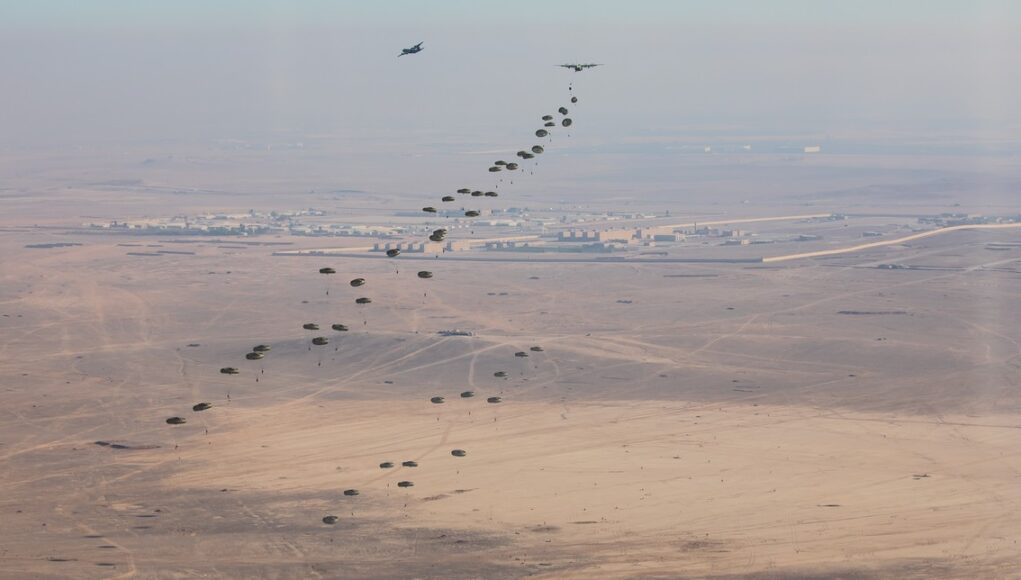




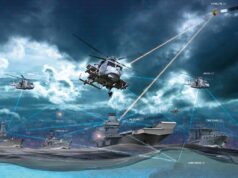

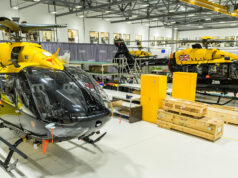
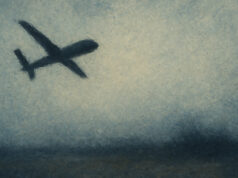


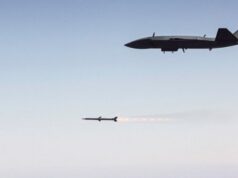

How are the raf drop air troopers or paras when the c130 is with drawn due to the muppets in the mod
In what scenario are we going to air drop into combat?
Presumably those scenarios they train for?
Er, drop lead Coy group, seize a location ready for the remainder to be air landed to evac civvies, whatever is needed, whatever the situation arises. If you haven’t got that, or a certain capability then it reduces your options, which can lead to a bad option seemingly feasible!
It’s war do the unexpected to win
A400 will take that role when the C-130s get scrapped, Mind you the A400 has been in RAF service since 2014 and still isn’t cleared to drop paras.
Happy to be corrected if I’m wrong.
EDIT: Read further down so ignore what I said
They were jumping out of them a couple of weeks ago so its clearly possible to use them presumably just need the paperwork
They’ll have to finally grow some cojones and sign off the paperwork enabling them to use the A400M instead, more effectively and safely, now that all the clearance work has been finally completed
“With drawn” Idiot. It isn’t being withdrawn.
a400
I wonder what the score will be when the C130 is retired. Does the A400 need modified to be certified for para drops or are the changes minor to bring it up to whatever spec the French signed off on. I think we will end up keeping a couple of C130s even if it is just to support special operations groups in the back of beyond.
My thoughts exactly in regard to the C130, although the cost of keeping just a few would negate the effort at reducing types as opposed to numbers. But I’m sure a few US C130s could be cobbled together quick. As for the Atlas, trials are going, and I do believe most of the issues, which involve air flow and collisions on exit for sim sticks, have been solved. But, as you know mate, with the Army, if push comes to shove, and we needed to drop a couple of Coys worth of blokes, they would lob them out of an Atlas and take the shite exit and air steals and collisions as part of the risk assessment. Get a few lads with high twists, and a few tangled would be worth it in the Army’s eyes to get the lads on the ground and get on with their job….
although the C130 has a few years left in it, I think they will go ahead and let them go and the current A400 and C17 will have cover all the tasks. Logistics and para drops.
I suggest you are conflating Army thinking with The Maroon Machine thinking.
However, can’t take it away from the Maroon that they be nails.
I bow and doff my cap for that little compliment….but push comes to shove even the rest of the Army, certainly my old mob (as you say lol) would be prepared to take operational risks with blokes, if the percentage of “damaged ones” was deemed acceptable in proportion to the importance of the task….Ah the days of being pretty well expendable, miss it soooo much ;0)
Well said. I believe once they’re forced into biting the bullet, they’ll take to it like ducks to water.
https://www.defensenews.com/global/europe/2020/06/03/airbus-a400m-cleared-to-drop-more-paratroopers-through-its-side-doors/
The UK A400M is fully compatible and equipped to do all types of jumps, from both para doors and ramp, more safely, effectively and efficiently than the C130J ever was. It’s just that a combination of a supremely risk averse RAF RTS community at senior level, very conservative MAA community in cahoots with folk at QinetiQ, and a ‘I never want to make the change” mentality in some Army ranks and SF community, combine to stop it from happening so long as the Herc is around. Now that the Herc will finally go, they’ll all have to finally bite the bullet and make the change. Once they do, they’ll never look back.
There can be a lot of hidden agendas when it comes to not enabling capabilities. The RAF prob thought if we don’t certify it for parachute drops immediately we can keep the c130s before the beam counters cut them.
To be fair there were issues with the A400M at first. Airbus have put a lot of work into it to sort it out. Now it’s just a question of finalising the test regime in the UK, using UK equipment and QinetiQ/MAA procedures, finalising the risk assessments and the senior RTS staff signing off on the capability. The French have done it. It’s a question of will and focus. They haven’t had to do it because the Herc has been there. Now that it’s going they’re going to have to do it.
Some confusion seems to exist around weither the A400 is certified to do Para drops, surely this would have been sorted out before they came into service . Have they just been used to haul equipment about.
It is. Fully demonstrated and certified. The french do it already. In all its forms. It’s true that it still hasn’t received UK Release to Service by the RAF for UK jumps. The reason for that is because the UK authorities concerned haven’t ‘digitum extractum’ and done it, because a) in the past the A400M has had issues and b) because the Herc has very conveniently been around. Now that all issues have been resolved and the Herc is being retired, they’ll have no option but to do it. Neither the C-17 or C-130J received their respective jump clearances at the time of their respective entries into service. Gradual and progressive capability release to service is very common with all aircraft programmes.
The A400 has a lot to live up to in taking up the mantle from the C130, both in day to day taskings and SF taskings.
Yes Nic, but i still don’t get your point. Should we still be flying Beverleys? The A400M does everything the endorsed requirement calls for. Better hot & high performance than Herc. Softer and shorter field performance. Much faster climb rate, service ceiling and speed. Almost twice the payload/range. Greater manoeuvrability. Full envelope protection with Fly By Wire. All 22 aircraft fitted with FLIR/Passive Night Vision System displayed on HUD and MFDs. All 22 a/c fitted with automated DASS with nine a/c fitted to Theatre Entry Standard with three turret DIRCM and armoured cockpit. Only possible criticism is the size of the aircraft for some special ops, but to be fair, if size is really critical for Ops success, then something the size of an Islander is more suitable anyway. Not that much difference between RCS of a Herc and an A400M.
From which battalion is this from?
2 PARA + 16AA elements, Article in the Telegraph but it’s behind a paywall.
Global Britain.
Why are we cutting our air transport fleet? CDS please explain?
We have capacity in our current fleet, and we are operating 4 aircraft types. 5 additional Voyagers can also be brought back into the fleet at short notice. Atlas will take on para drop role’s, if it’s ever required. The RAF has the most capable transport/tanker fleet in Europe by some margin. Hercules is in service until 2025, the money saved will fund more pressing capabilites we need for the 2020’s and beyond. Albert has served us well, but we have to let go of legacy kit.
We’ve 20+ Atlas’s flying about the same as half that number of Hercs. So if Atlas can be made to deliver a normal availability then the output is the same. If… 🙂
Fingers crossed they can sort the issues with Atlas, and get it working to it’s full potential.
They’ve been solved. The grownups now have to sign off on the paperwork. Might require a few more reddies shoved in the direction of QinetiQ, you know, to conduct more ‘tests’ here and there in order to inform a few more ‘safety cases’, but it’s there. The Frenchies are doing it regularly.
So how are airborne going to be supported as they will need resupply, engr plant, guns, mobility and A400m massively behind schedule for dropping anything other than troops. Can A400m drop all paras in one go if DZ large enough and does it have any defensive aides?
All equipment drop tests were concluded before troop trials were finally successful, including up to a 6T wedge load out the back while the boys jump out of both doors. Both gravity extraction and parachute extraction tests concluded. From individual pallets all the way up to a single 16T load. The A400M’s load space and cargo handling system have been designed with inputs from ex-C17 and C-130 RAF Loadies and inputs also from JATDU (or is it JADTU? I can never remember) based at Brize Norton. Most Army loads have been tested and loading schemes worked out. 7 (or is it 9, again I cant remember) A400Ms are fully fitted for what it known as Theatre Entry Standard including cockpit armouring and DIRCM (three turret fit designed by DSTL and Air Warfare Centre using the NG LAIRCM system). That is on top of the normal comprehensive chaff and flare dispensers. All A400Ms are fitted for but the RAF has only bought 7 (9) kits. So the answer to your questions is no excuses. It’s all there. It’s just a question of wanting to do it. Ask the boys and girls at No LXX Squadron. They’re raring to go.
Not sure what issues remain but A400M is continuing to add New Capabilities, scroll down to the section under that heading at the link below for details.
https://www.airbus.com/newsroom/press-releases/en/2021/05/airbus-delivers-the-100th-a400m.html
Thanks for the link 👍
Hear, hear!
I’m not sure but I believe the Boeing C17 production line has closed down and that Airbus will no longer build A400s. Which means the only decent sized tactical transport aircraft available is the venerable C130 and the horrendous Il76/78. So if we wanted more C27s or A400s they would have to be second hand.
Nobody in their right mind (outside of politics) would buy the C27.
The Brazilian KC390 looks interesting but no idea how robust / short field it is. Their link with Boeing on it seems to have collapsed, not sure if technically or financially driven.
Of course Airbus is building more A400M for many more years to come. 174 existing orders , 100 built so far. So that is at least 74 still to produce if no new customers decide to purchase more.
Cheers, that’s good to know. If we decide that the numbers we have are to low and need to get a few more.
A drop of just 150 paras from two aircraft up for sale is a hardly a “show of strength”. How many qualified paras does the British Army currently have? I doubt if it exceeds 1000.
As a counter, Russia could easily conduct a mass drop of 1,500 paras in to Syria next week, or perhaps 15,000 next month if they really wanted to show off!
And? Its showing a number of things, the capability to do this, the ability to deploy with friendly nations and good training value. As for para trained blokes, around 1500 plus in 2 and 3 PARA (1 PARA SFSG),around 250 4 PARA Reserves plus around 1000 “other arms” enablers etc, IN DATE. More blokes out of date doing other jobs. Don’t forget SF are all static lined trained and as are a large amount of RM. Numbers fluctuate depending on aircraft availability for basic courses and refreshers etc. But numbers don’t really count as its the ability to deploy them that’s the real factor, and while the Russian ABF have large numbers of both delivery platforms and troops, its where, when and how to use them. At the moment they are still operating in the large Bde/Divisional drop scenario, which as we all know isn’t really a useable concept in this era of modern weapon systems. Its more about militaries having the capability to drop someone and something from the air, to ensure that any future enemy has to take that capability into its planning considerations, and deploy assets and people to possibly counter that threat..
Morning Airborne. Thanks for “from the horse’s mouth” info 😆 . As a layman it seems to me that Paras primary role in the 21st Century is to access a problem situation quickly and either deal with it or hold the line until slower reinforcements are available. The days of mass drops a la D-Day are perhaps a thing of the past?
Cheers from Durban
Hi Geoff yes for sure big drops are pretty much gone (but you know Sod’s law lol) and it will invariably be small scale, Coy group, short deployments to either secure a location for an extraction of some type (oil workers in hostile zones etc) or a short term “drop and hold” for a resupply/re-armament/staging post as part of larger operations. But saying that mate things have a habit of cropping up and we have to suddenly reinvent the bloody wheel! But I’m a firm believer that having the capability will always keep the opposition guessing and they will have to factor that into their planning considerations and adapt their thinking and deployment accordingly. Cheers mate have a good one in sunny Durban…..ah the comrades marathon now that was tough 😂
Hi Airborne! You did the Comrades?😃 Well done! I did standard marathons but my main sport was the other big ultra-the Dusi Canoe Marathon of which I completed 30 over a period of 40 years and my wife’s Dad won the Comrades twice in the 50’s-Gerald Walsh-best time 6 hours flat and 20 cigarettes a day 😀 he also held the record for the London to Brighton for several years.
Thanks for Para info-a legendary unit -you should be very proud of your service!
Mate I as at Bleomfontein for 6 months with 44 Bde, but knowing I was going I did a quick random marathon in UK to get the required sub 4.5hr time to qualify. Great times with 44, really good. As a quick dit, I was feeling a bit crappy about the 40 mile mark, and some bloke trotted up behind, started chatting to me, gave me a bit of his energy gel, jogged with me for about half an hour then disappeared past me. He had told me he was on his, if I remember his 24th marathon, and he was 72!!!!!!!! I thought bloody hell heres me thinking I’m friggin Airborne……🤣 Thanks for your kind comment, appreciated.
Against a peer or near peer opponent, that has wide area air defence and/or interceptors, then any form of para drop behind enemy lines would be suicide, the planes are just too slow and too big to avoid radar detection. However small scale drops in counter insurgency or special forces missions will still happen.
Yep, good comments. Our SME is on hand.
One thing that Airborne hasn’t mentioned, which is perhaps more in use today is the role of the pathfinder and force reconnaissance. Basically the insertion of a small group or platoon dropped behind enemy lines using high altitude high opening (HAHO) techniques (instead of high opening low opening (HALO). This a free fall technique where you use a ram-air chute to significantly extend your jump distance, allowing the aircraft to be outside the air defence umbrella. More importantly compared to static line which generally uses a conical chute. The ram-air is more controllable and allows you to land softly as opposed to a controlled crash.
Spot on Davey, didn’t mention it as was more concerned with explaining why and how we could drop blokes with the standard static line and if its relevant any longer. But your spot on, small team insertions using both those methods are in fact more likely as they are easier to plan, safer and more covert. In the old days however even young Tom’s could go to Brize and do a SLS, static line square course, more of a jolly but also a useful extra capability in Battalion. Alas very very rare nowadays as its seen as it was, a jolly and therefore the RAF cant wont do them much any longer. Understandable though to be fair with finance and manpower issues all services are under. Cheers mate.
The last but one tour I did in Afghan, the SF used both a HALO and static line insertion at night to hit a bomb making factory. Sending in a recon team by HALO, then when the person of interest was spotted the rest static lined in. After they took the compound, the Chinooks went in to pick everyone up. Apparently the whole action only lasted 15 minutes after the static line insertion.
I believe the French have tried this already from A400M. When i was still in Airbus it was all very hush, hush. But i know from some of the test pilots then that they were decompressing, opening the ramp, closing and re-compressing somewhere above 30K feet. Once saw a French SF jumper dressed up to almost look like (to me at least) a quasi-astronaut. I’m sure I wasn’t supposed to have seen him.
At 30,000ft the outside air temperature will be around -44C if the ground temp is about +21C. When jumping from 15,000ft and above not only do you need to be on Oxygen but also using heated over-suits. The whole face needs to be protected with no skin showing or you will get frostbite. The highest I did was 27,000ft from the back of a Herc. Even with the heated suit, you still feel the cold especially in the hands and feet. In the good old days when men where men, they just used quilted body warmers under a one piece suit, proper nails!
Thanks Dave. That would explain the kit the French jumper was wearing.
I don’t think we can compare our numerical strength with that of Russia. We would never take them on alone.
“is illustrative of the British Army’s more integrated and more expeditionary Future Soldier concept, ready for future challenges.”
No its not. It is SPIN. Nice to see 16AA doing this of course but no different to what they have done for decades as part of JRDF then JRRF then AATF.
Hi Daniele. hope you are well
Hello my friend. Yes, we are 2nd jabbed and looking forward to summer, if It happens!
Spot on mate, corporate talk, lads in Battalion would say “WTF are they waffling about” 😉
I have never understood why anyone would leave a perfectly severable aircraft while it was still in flight!.
Because its fun, especially free fall, you can keep static line for your base jumping weirdos.
Base jumping ah I have a good mate who has been doing that for years, I’ve watched him, looked down, saw how close the ground was, about 150 feet, saw him jump land and fucked off to the pub to calm my nerves, never mind his!!!!!! Lol.
Nearly as bad as jumping through a thunderhead.
In a major European / Asian conflict. Civilians can be called up and trained in a few months for the infantry. Ships, Subs will be built in a year & the RAF frontline aircraft will double with US of the shelf aircraft. pilots will take a little more time to train. Para have use of the C17 as well as the RAF 20 M400.
sorry. Should be
A400
Recruiting ,selection ,basic training ,
Initial pilot training, fast jet training and then operational training and conversion training then you need the aircraft it would take sometime.
“ships/subs built in a year” – where will the capacity, skilled workers and materials come from in such a short space of time? if it hasn’t gone nuclear by then
Gemma you cannot train any soldier in a few months, certainly not an Infantry soldier in the British Army. I’m still amazed at this false assumption that being in the Infantry must just involve running about with a weapon drooling and wishing we had done better at school! To train an Infantey soldier in the basics, yes the basics, takes 6 months that’s just good enough to pass out and go to Battalion, then the hard work and knowledge and skill base starts. Yes you can put civvys in uniform give them 2 months and say you are trained, but they will be f****** useless and very soon dead. With such people in uniform a commander, at any level, would be unable to achieve his aim and mission, and therefore fail every time. Cheers.
I know about the military & agree with you of course .I was just making the point,that at time of major geopolitical crisis.Chinese-Russian Military aggression. The nation would pull together and as with covid crisis.Cash from the Government magic money tree would be made available. Line infantry are constantly training,evolving through tactics and field craft etc attending carders etc.
I mean cadre – courses
And we don’t jump the UK C17s, or at the moment the Atlas.
Correct Airborne. But when I was at Brize the RAF kept talking of jumping from the C-17, not to mention the A400M. Just like they kept talking of putting a boom on the Voyager. But the seniors never signed off on the requirement documents thus releasing the money for the tests needed. No money, no testing, no capability. They’ll have to do it now on the A400M. They’ll have no option.
Correct mate, they have no option but to sign it off and get the blokes jumping Atlas. As for C17, lobbed it quite a few times when I was at Bragg, mounting from Pope AFB. Noisy once those side doors are open and even with the deflectors out, hell of a slipstream. But I have to say, bring back the balloon 😂👍💩!